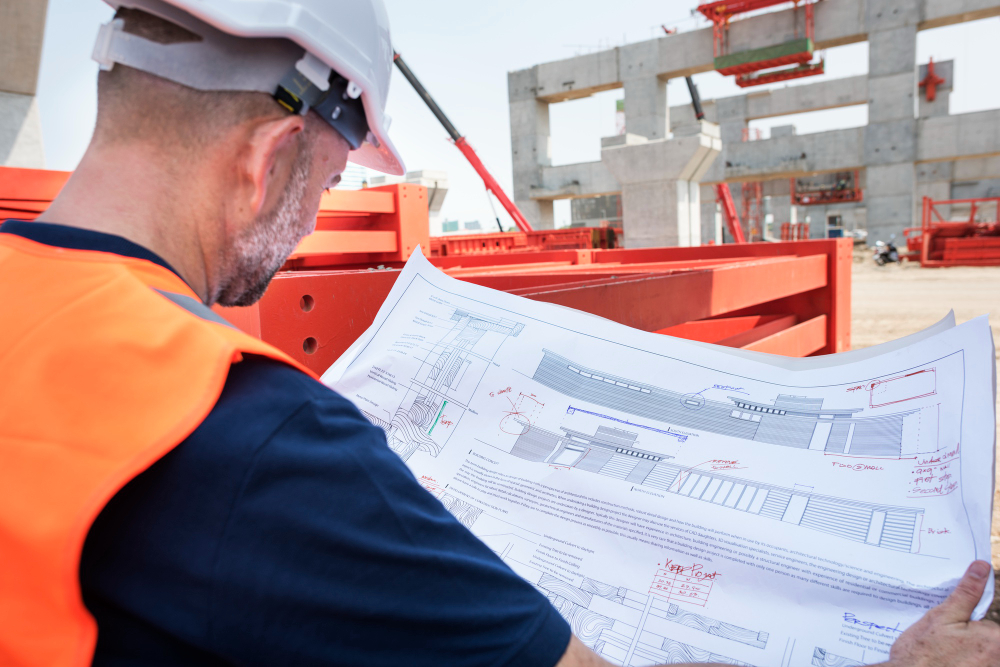Importance of Choosing Construction Delivery Methods
When you are starting a construction project, one of the most important decisions you’ll make is choosing the right project delivery method. This choice defines how responsibilities, contracts, and communication will flow between the owner, designers, contractors, and other stakeholders throughout the project’s lifecycle. As a construction estimator, I can tell you — selecting the appropriate delivery method can significantly impact cost estimates, schedules, risk, and collaboration. Let’s break down the six main construction project delivery methods and how to decide which one fits your project best.
Construction Estimation Services Hire Us for Expert Opnion
As a professional construction estimating service, we help you make smarter decisions when choosing your project delivery method by providing accurate cost forecasting, detailed material takeoffs, and risk-informed estimates tailored to each delivery type. This includes guidance on whether to use Excel vs estimating software. Whether it’s Design-Bid-Build, Design-Build, or CMAR, our expertise ensures you understand the true financial implications from day one—minimizing surprises, preventing budget overruns, and aligning your project scope with the best delivery strategy.
Table of Content
Design-Bid-Build (DBB) The Traditional Approach
Design-Bid-Build is the most commonly used method and follows a clear, linear path:
- First, the design team completes the full design.
- Then, the project goes out for bids.
- Finally, the winning contractor builds the project.
Pros
- Competitive bidding may reduce costs.
- Clear separation between design and construction roles.
Cons
- Contractors can’t offer input during design, leading to potential change orders later.
- Longer overall timeline due to the sequential process.
Best For: Public sector projects or when cost transparency is a priority.
Design-Build (DB) One Contract One Team
With Design-Build, the owner signs a single contract with a firm that handles both design and construction. This streamlined approach promotes collaboration and speeds up delivery.
Pros
- Faster project delivery.
- Improved communication between design and construction teams.
- Better cost control due to early collaboration.
Cons
- Less owner control over design.
- Possible conflict of interest if the builder prioritizes budget over quality.
Best For: Fast-track projects or when early cost certainty is needed.Hire Utopian Takeoffs to prepare cost estimates that make the Design-Build process smoother and more predictable.
Construction Manager at Risk (CMAR) Guaranteed Cost Control
In CMAR, the construction manager is brought on early to assist during design and then oversees construction. They commit to a Guaranteed Maximum Price (GMP), assuming the financial risk for budget overruns.
Pros
- Early cost input and collaboration.
- Stronger cost accountability.
- Owner retains design control.
Cons
- Relies heavily on the CM’s expertise.
- Cost savings are shared or kept depending on contract terms.
Best For Complex projects with tight budgets and timelines. Our experts can help you assess CMAR suitability and prepare Guaranteed Maximum Price–ready estimates. Consult us before you decide
Construction Management Multi-Prime (CMMP): Owner-Led Control
This method allows the owner to act as the general contractor, contracting separately with the designer and each trade contractor.
Pros
- Greater owner control.
- Direct engagement with trade experts.
Cons
- Requires construction experience.
- Higher risk of coordination issues without a dedicated general contractor.
Best For: Experienced owners managing large or phased projects.

Public-Private Partnership (PPP or P3)
PPP projects are formed between public agencies and private companies — often for infrastructure, transportation, or public buildings.
Pros
- Leverages both public funding and private expertise.
- Payment protections through performance and payment bonds.
Cons
- Complex regulations and approval processes.
- Risk of changing political or funding priorities.
Best For: Large-scale infrastructure or social impact projects.
Integrated Project Delivery (IPD)
IPD unites all parties — owner, designer, builder, and sometimes key subcontractors — under a single, shared contract. Everyone shares in the risk and reward, making teamwork essential.
Pros
- Maximum collaboration and innovation.
- Reduced waste and schedule delays.
- Aligns all parties toward common goals.
Cons
- Requires significant early planning.
- Contractual complexity may not suit smaller firms.
Best For: High-value, complex projects with innovative or sustainable goals.
Consult Our Estimators Before You Decide
As an estimator, I advise you to consider the following:
Project Type
Is the project complex and design-heavy or repeatable and process-driven?
Risk Tolerance
Do you want the builder to assume risk (e.g., CMAR, DB) or keep more control yourself (e.g., DBB, CMMP)?
Timeline
Do you need to fast-track construction? Design-build or IPD may help.
Budget
Fixed budgets benefit from early cost input (CMAR, DB), while competitive bidding may suit DBB.
Comparison Table
Comparison of Construction Project Delivery Methods
| Delivery Method | Contracts | Owner Control | Collaboration Level | Cost Certainty | Risk Distribution | Best For |
|---|---|---|---|---|---|---|
| Design-Bid-Build (DBB) | Separate for design & build | High (during design) | Low (sequential process) | Medium (competitive bids) | Owner bears design-construction gap risk | Public sector, cost-transparent projects |
| Design-Build (DB) | Single contract for design-build | Medium | High (integrated team) | High (early input) | Firm assumes most risks | Fast-track or early-cost clarity projects |
| CM at Risk (CMAR) | Separate (CM + designer) | High (design control) | Medium-High (early input) | High (GMP based) | CM bears cost overrun risk | Complex, time-sensitive projects |
| CM Multi-Prime (CMMP) | Multiple trade contracts | Very High | Medium (owner-led trades) | Variable | Owner manages coordination risks | Phased projects, experienced owners |
| Public-Private Partnership (PPP) | Complex, long-term agreements | Low (shared with private) | Medium (gov-private team) | Medium (performance-based) | Shared, mostly on private side | Infrastructure & public facility projects |
| Integrated Project Delivery (IPD) | Single, shared multi-party contract | Shared among parties | Very High (aligned goals) | High (collaborative planning) | Shared by all team members | Innovative or sustainable large builds |
Key Roles in Each Construction Delivery Method
As a professional construction estimator in the United States, I’ve seen how project delivery methods don’t just influence workflow—they shape responsibilities, communication, and accountability. Let’s break down the key roles—specifically the Owner, Designer, Contractor, and Estimator—and how these roles shift across the six major project delivery methods.
Design-Bid-Build (DBB) Traditional But Segmented
- Who Takes the Lead
The Owner initiates and leads the process, hiring the Designer and later selecting the Contractor through a competitive bidding process. - Risk Manager
The Owner holds the most risk due to the lack of integration between the design and construction teams. - Control
- Design: Controlled by the Designer.
- Cost: Managed post-design through competitive bidding. Estimators prepare bids based on finalized drawings.
- Schedule: Sequential, often slower—owner oversees coordination between design and build phases.
Design-Build (DB) Integrated & Streamlined
- Who Takes the Lead
The Design-Builder (a single firm or joint venture) leads the entire project. - Risk Manager
The Design-Builder assumes both design and construction risks, including cost and schedule commitments. - Control
- Design: Shared, but often contractor-led.
- Cost: Greater control due to early estimator involvement and cost feedback loops.
- Schedule: Efficient and fast-tracked by the unified team.
Construction Manager at Risk (CMAR)
- Who Takes the Lead
The Owner hires both the Designer and the Construction Manager (CM) early. - Risk Manager
The Construction Manager takes on financial risk via a Guaranteed Maximum Price (GMP) agreement. - Control
- Design: Controlled by the Owner and Designer, allowing flexibility.
- Cost: Managed closely by the CM and Estimator, ensuring cost visibility during design.
- Schedule: Influenced by early collaboration and phased construction.

Construction Management Multi-Prime (CMMP)
- Who Takes the Lead
The Owner acts as the general contractor and leads every aspect of the project. - Risk Manager
The Owner carries most of the coordination and performance risks. - Control
- Design: Fully retained by the Owner and Designer.
- Cost: Estimators must provide careful trade-by-trade breakdowns; cost control varies.
- Schedule: Complex due to multiple trade contracts; requires skilled oversight.
Public-Private Partnership (PPP or P3)
- Who Takes the Lead
A Private Entity (or consortium) leads the design, construction, operation, and maintenance. - Risk Manager
The Private Partner assumes financial, operational, and sometimes lifecycle risk. - Control
- Design: Often performance-based, with flexibility for innovation.
- Cost: Locked through long-term contracts; private financing ensures cost efficiency.
- Schedule: Aggressively managed for public deliverables and return on investment.
Integrated Project Delivery (IPD)
- Who Takes the Lead
A Collaborative Team consisting of the Owner, Designer, Contractor, and key trades—all under a single agreement. - Risk Manager
All major stakeholders share both risk and reward, fostering true integration. - Control
- Design: Fully collaborative; driven by shared goals.
- Cost: Transparent and actively managed by all parties, especially the Estimator.
- Schedule: Proactively managed to align team incentives with performance.
Why This Matters to Estimators?
As an estimator, understanding the role structure and contract dynamics is essential to forecasting cost, identifying risk contingencies, and optimizing the project budget. The more aligned the team, the more accurate and valuable the estimates become.
Common Mistakes When Choosing a Delivery Method
As a construction estimator in the U.S., I’ve seen firsthand how selecting the wrong construction delivery method can derail budgets, delay timelines, and lead to unnecessary headaches. Choosing a delivery method isn’t just about what looks good on paper — it’s about how well the method aligns with your project’s specific needs, risks, and goals.
Choosing Based on Familiarity, Not Fit
Many owners stick with what they know, like Design-Bid-Build, because it’s traditional. But that doesn’t always make it the best choice.
Underestimating the Importance of Collaboration
Some methods limit early collaboration between the designer and builder — which can lead to costly redesigns or change orders.
Not Considering Risk Allocation
Every delivery method handles risk differently. Some owners unknowingly take on more risk than they’re prepared for.
Ignoring Schedule Sensitivity
Choosing a method with a slow, sequential process (like DBB) can be a major issue if you’re on a tight deadline.
Failing to Evaluate In-House Expertise
Some methods (like CM Multi-Prime) require a strong owner-led team to manage contractors directly. Without that expertise, coordination can fall apart.
Overlooking Estimator Involvement
Choosing a delivery method without involving the estimator early can lead to unrealistic budgets or missing scope items.
Focusing Only on Initial Cost
Many owners choose based on the lowest upfront cost — but don’t factor in lifecycle costs, change orders, or delays. void these mistakes by contacting our team early—we provide risk-aware cost planning to guide you toward the right method.
Summary-Construction Project Delivery Methods
Choosing the right construction project delivery method is more than a procedural step—it’s a strategic decision that affects your project’s success from start to finish. As an estimator, I’ve seen how delivery methods impact cost accuracy, timelines, collaboration, and risk. The best results come when owners align their project type, budget needs, risk tolerance, and team capacity with the right method. Involve your estimator early, and you’ll build smarter, not just faster. Our team applies modern estimating techniques

